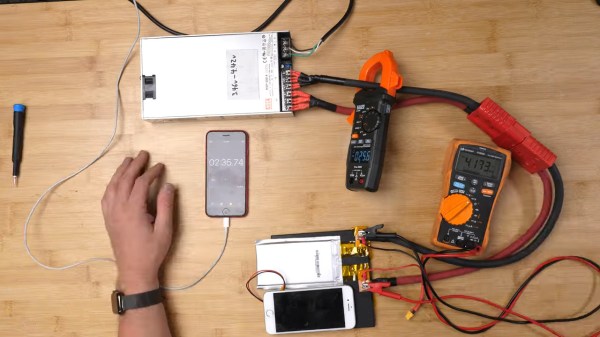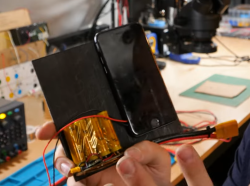Lithium-titanate (LTO) is an interesting battery chemistry that is akin to Li-ion but uses Li2TiO3 nanocrystals instead of carbon for the anode. This makes LTO cells capable of much faster charging and with better stability characteristics, albeit at the cost of lower energy density. Much like LiFePO4 cells, this makes them interesting for a range of applications where the highest possible energy density isn’t the biggest concern, while providing even more stability and long-term safety.
That said, LTO is uncommon enough that finding a battery management system (BMS) can be a bit of a pain. This is where [Vlastimil Slintak]’s open source LTO BMS project may come in handy, which targets single cell (1S) configurations with the typical LTO cell voltage of around 1.7 – 2.8V, with 3 cells in parallel (1S3P). This particular BMS was designed for low-power applications like Meshtastic nodes, as explained on the accompanying blog post which also covers the entire development and final design in detail.
The BMS design features all the stuff that you’d hope is on there, like under-voltage, over-voltage and over-current protection, with an ATtiny824 MCU providing the brains. Up to 1 A of discharge and charge current is supported, for about 2.4 Watt at average cell voltage. With the triple 1,300 mAh LTO cells in the demonstrated pack you’d have over 9 Wh of capacity, with the connected hardware able to query the BMS over I2C for a range of statistics.
Thanks to [Marcel] for the tip.



 What people commonly encounter is that charging speed depends on the charger involved, but even one hundred chargers in parallel won’t speed up this iPhone’s charging rate, so what’s up? First off, the phone’s charger chip and the battery’s BMS will both limit charging current, so for experiment purposes, those had to be bypassed. First attempt was using a hefty DC power supply with the original cell, and, unsatisfied with the lack of fire and still relatively slow charging, [Scotty] decides to up the ante.
What people commonly encounter is that charging speed depends on the charger involved, but even one hundred chargers in parallel won’t speed up this iPhone’s charging rate, so what’s up? First off, the phone’s charger chip and the battery’s BMS will both limit charging current, so for experiment purposes, those had to be bypassed. First attempt was using a hefty DC power supply with the original cell, and, unsatisfied with the lack of fire and still relatively slow charging, [Scotty] decides to up the ante.







